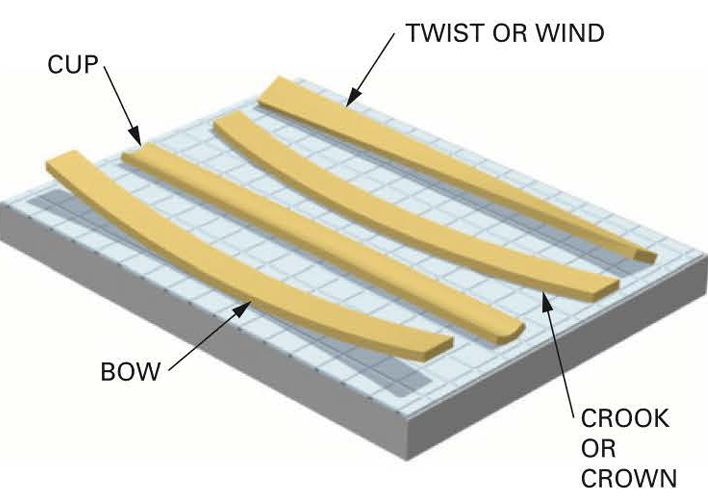A defect in lumber is any fault that detracts from its appearance, function, or strength. One type of defect is called a warp. Warps are caused by, among other things, drying lumber too fast, careless handling and storage, or surfacing the lumber before it is thoroughly dry. A warp may be classified as a crook (also called a crown), a bow, a cup, or a twist
Splits in the end of lumber running length wise and across the annular rings are called checks. Checks are caused by faster drying of the end than of the rest of the stock. Checks can be prevented to a degree by sealing the ends of lumber with paint, wax, or some other material during the drying period. A crack that runs parallel to and between the annular rings is called a shake and may be caused by weather or other damage to the tree. The pith is the spongy centre of the tree. It contains the youngest portion of the lumber, called juvenile wood. Juvenile wood is the portion of wood that contains the first seven to fifteen growth rings. The wood cells in this region are not well aligned and are therefore unstable when they dry. They shrink in different directions, causing internal stresses. If a board has a high percentage of juvenile wood, it will warp and twist in remarkable ways. Knots are cross-sections of branches in the trunk of the tree. Knots are not necessarily defects unless they are loose or weaken the piece. Pitch pockets are small cavities that hold pitch, which sometimes oozes out. A wane is bark on the edge of lumber or the surface from which the bark has fallen. Pecky wood has small grooves or channels running with the grain. This is common in cypress. Pecky cypress is often used as an interior wall panelling when
that effect is desired. Some other defects are stains, decay, and wormholes.



